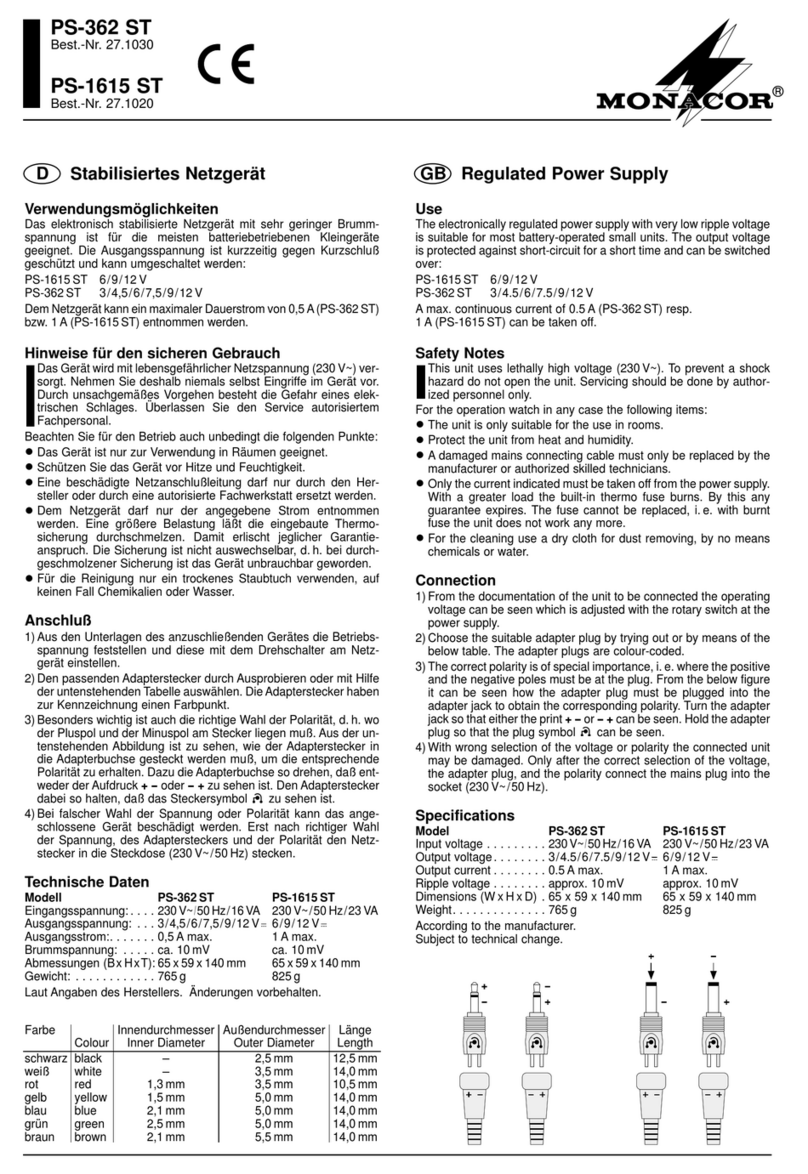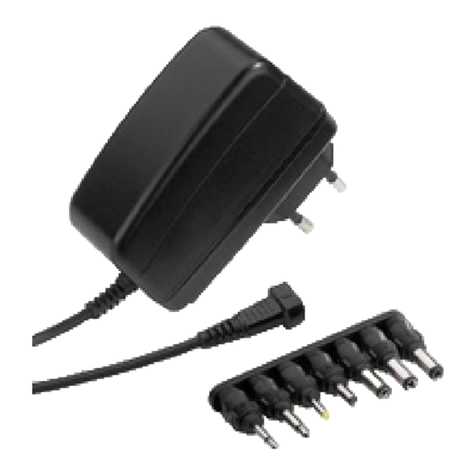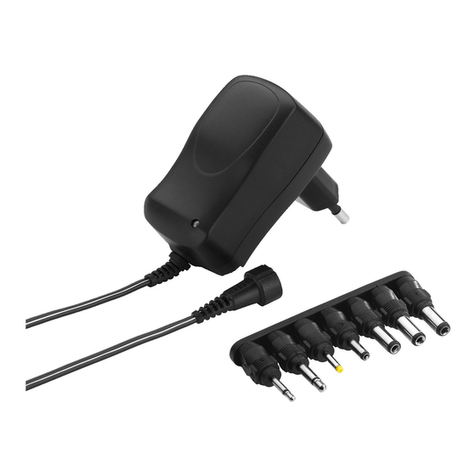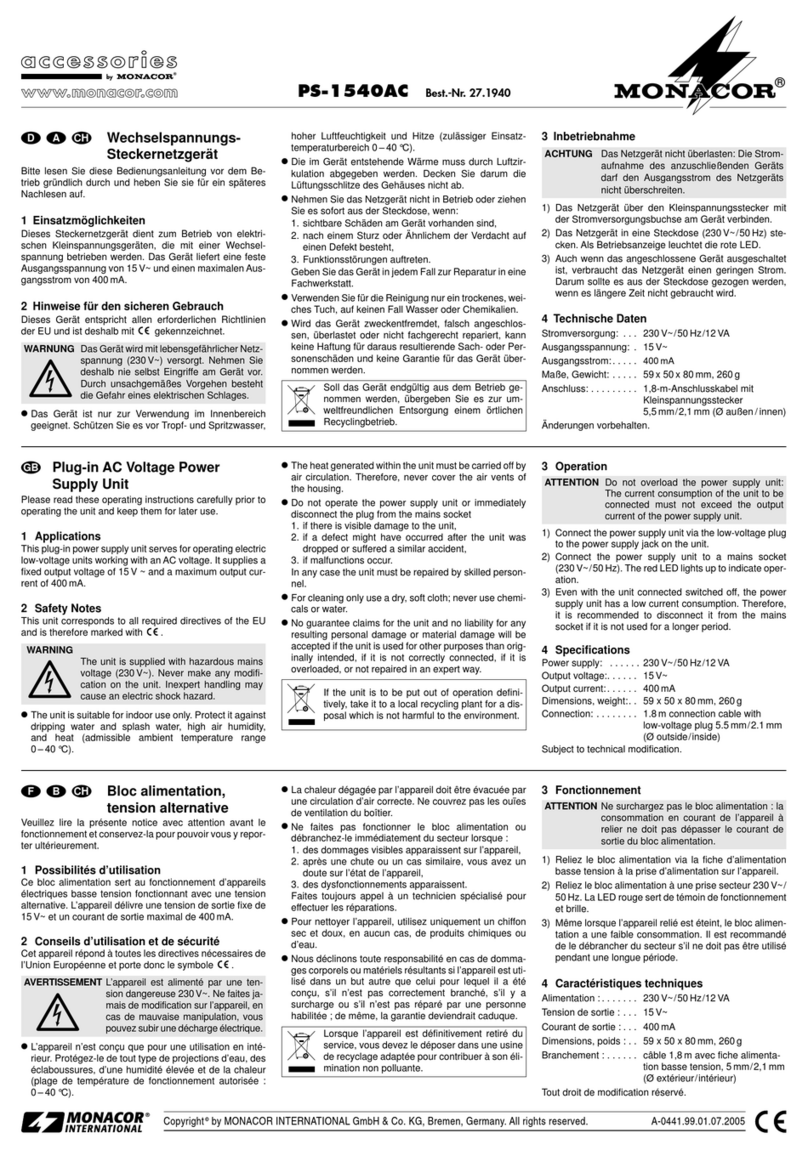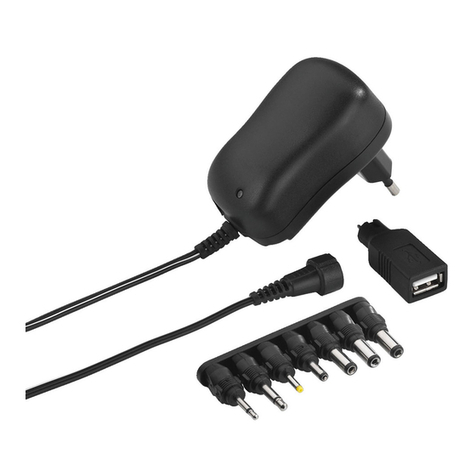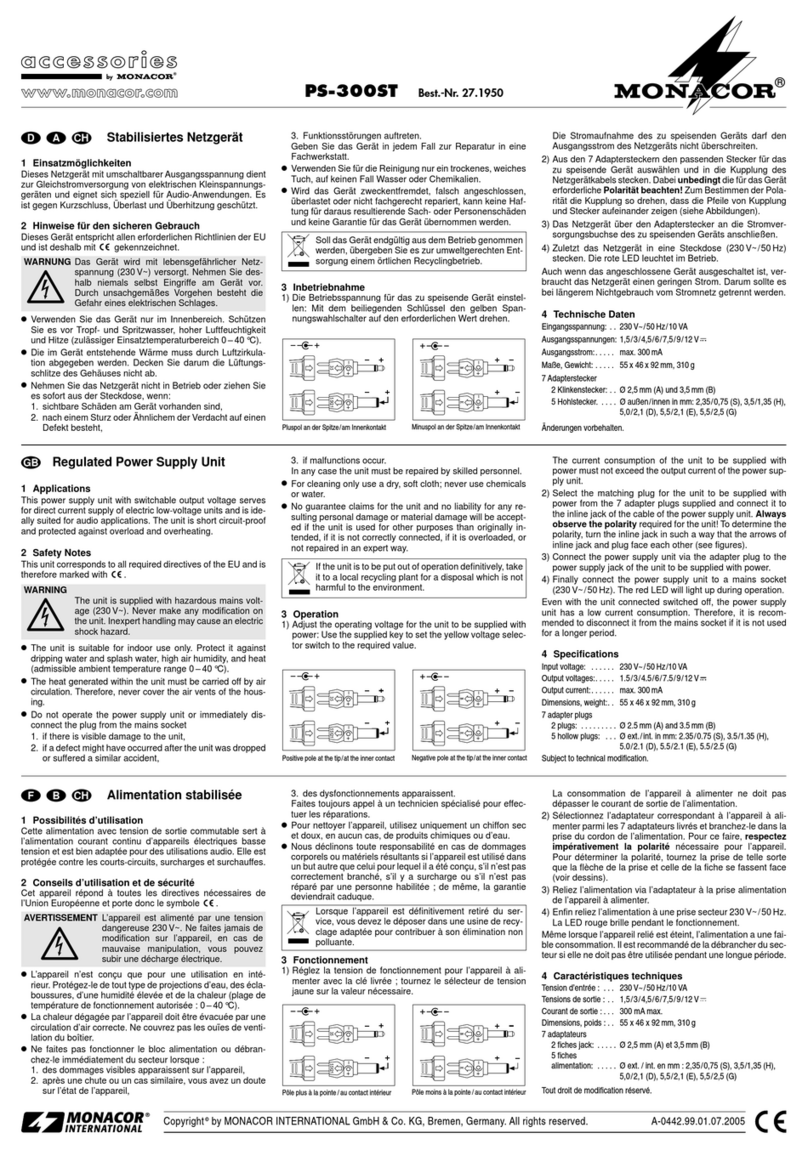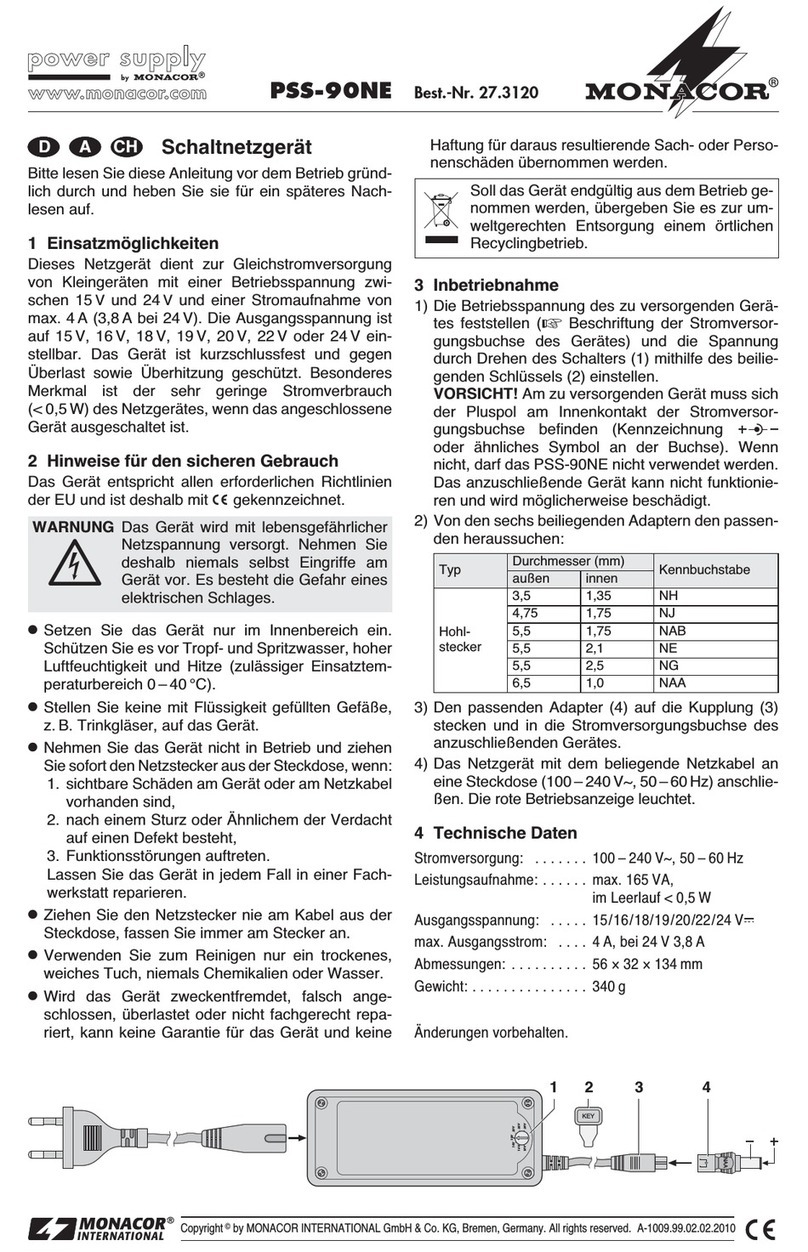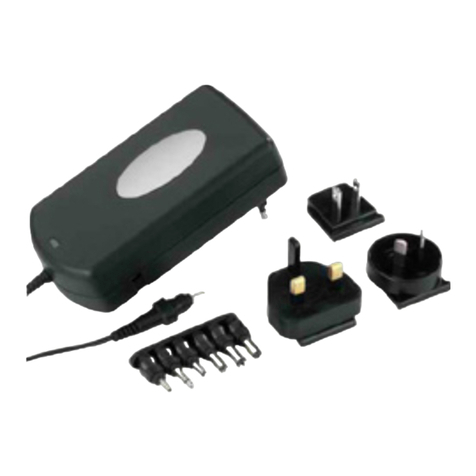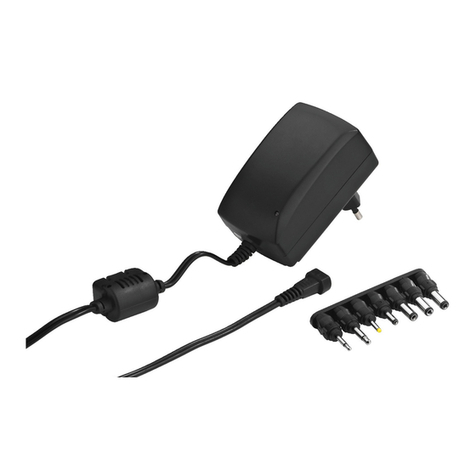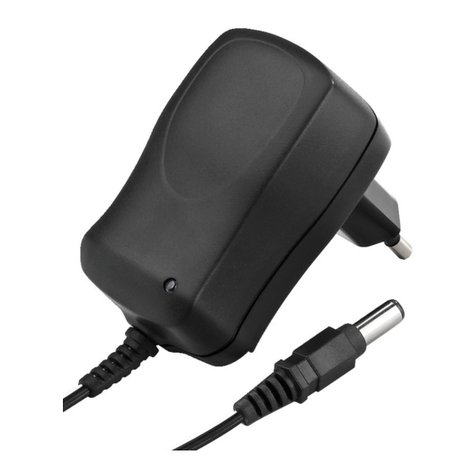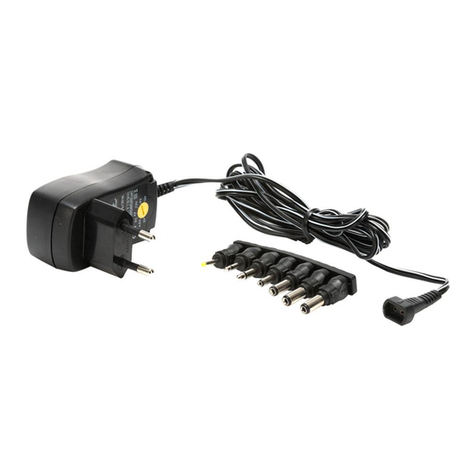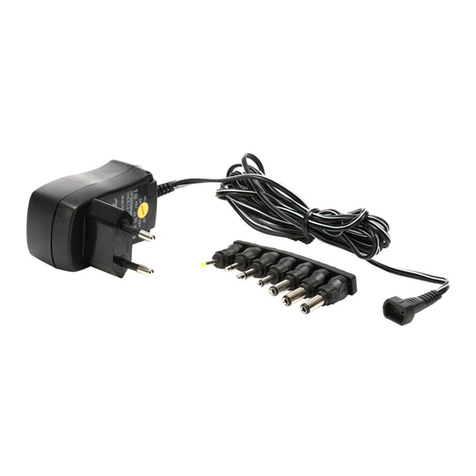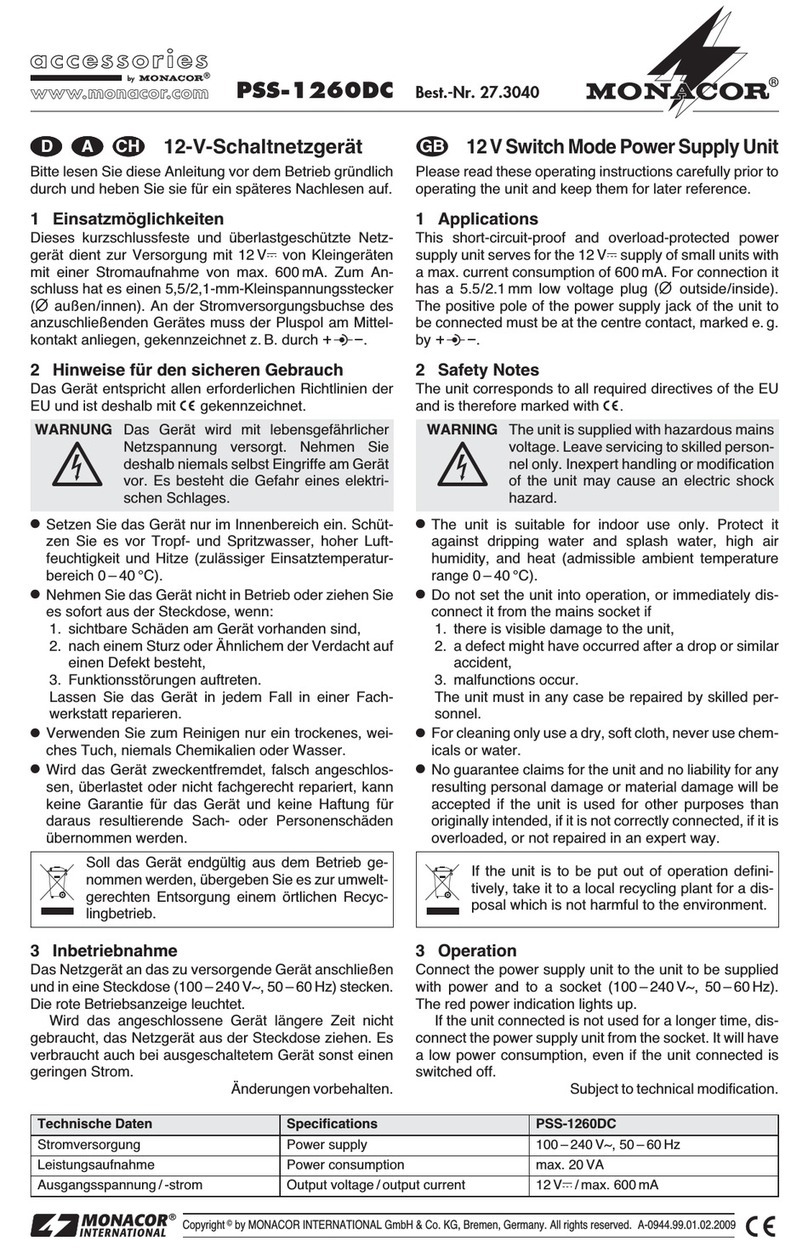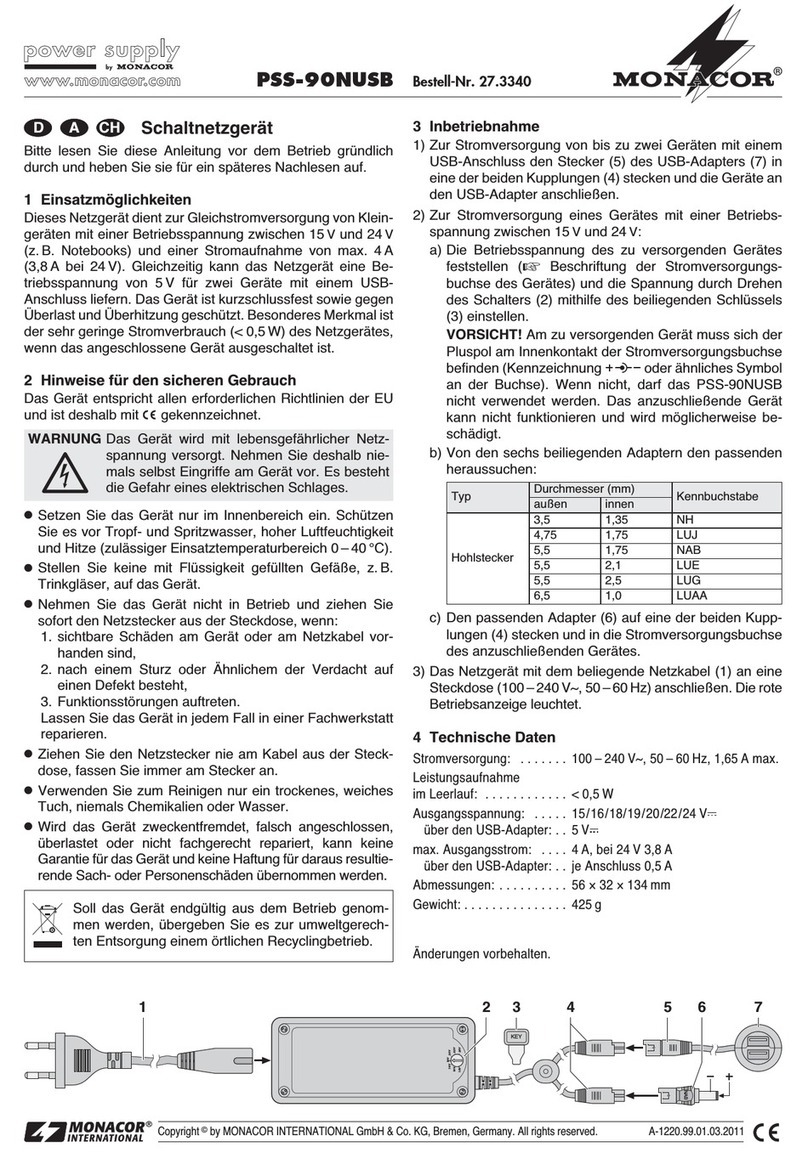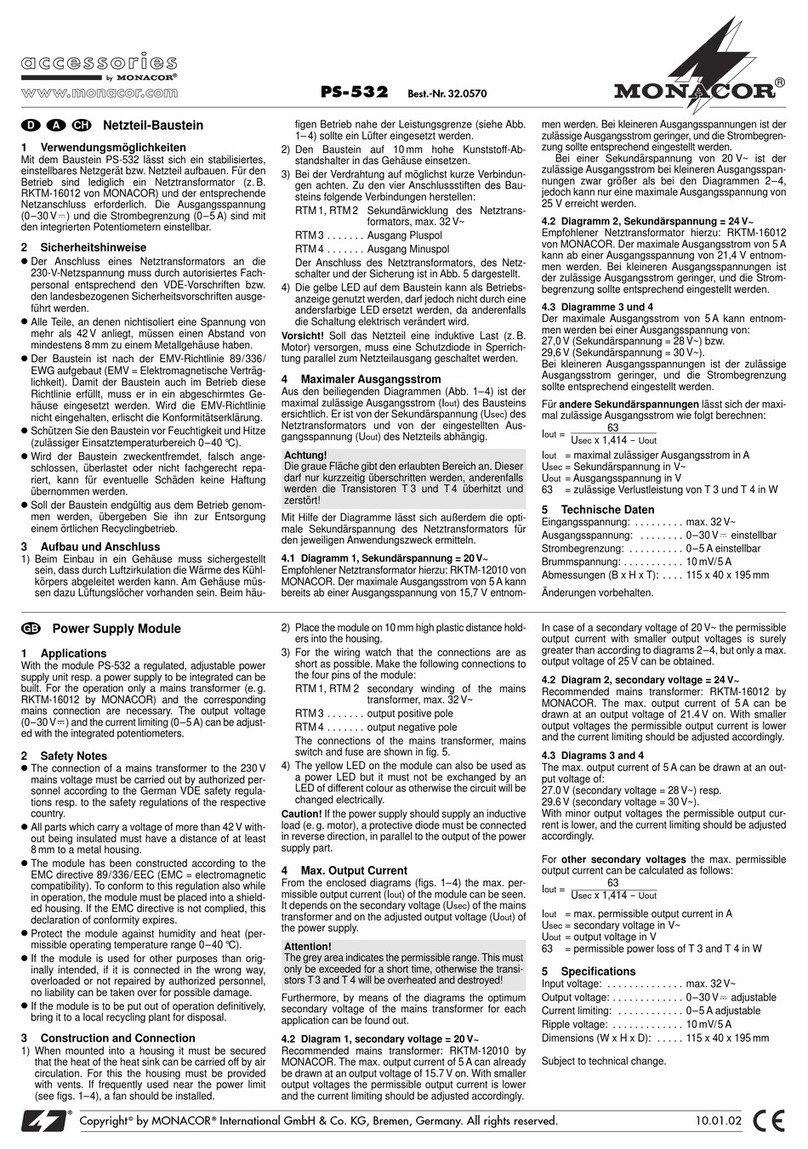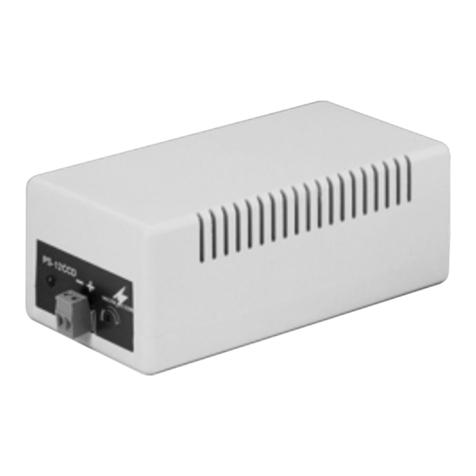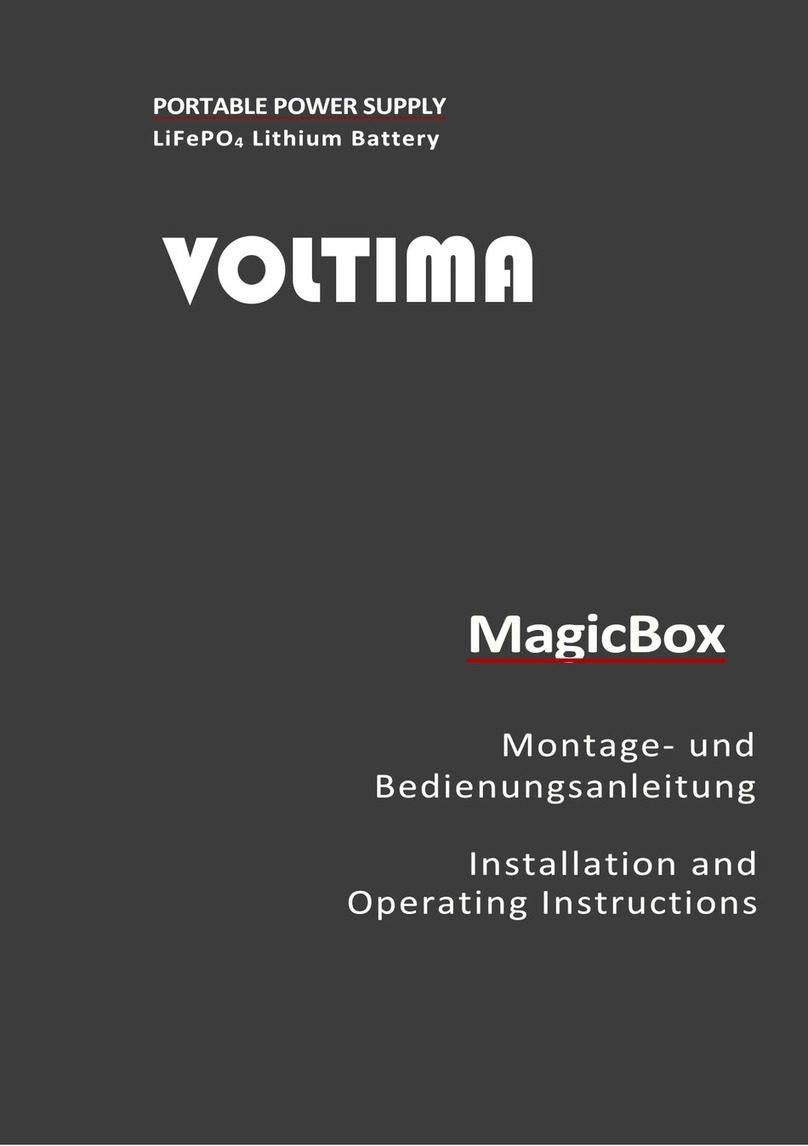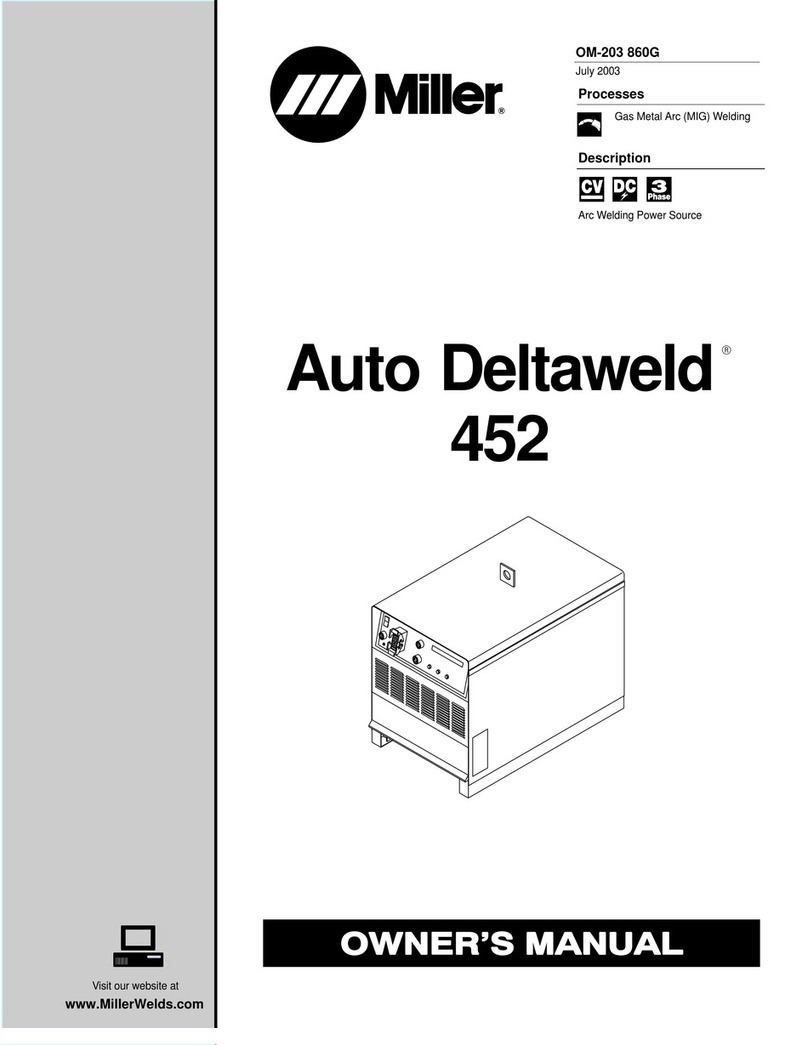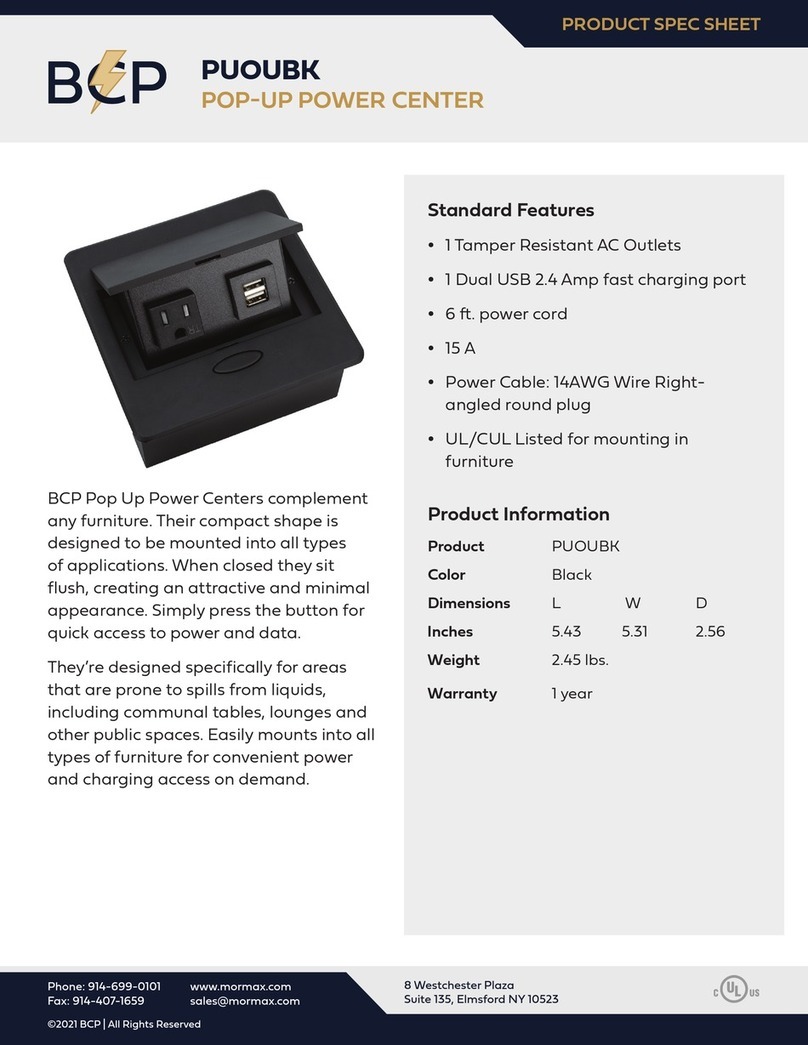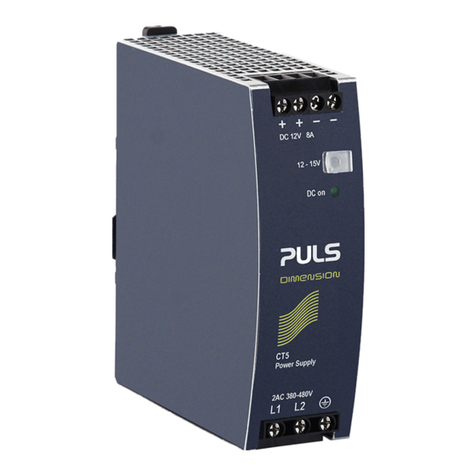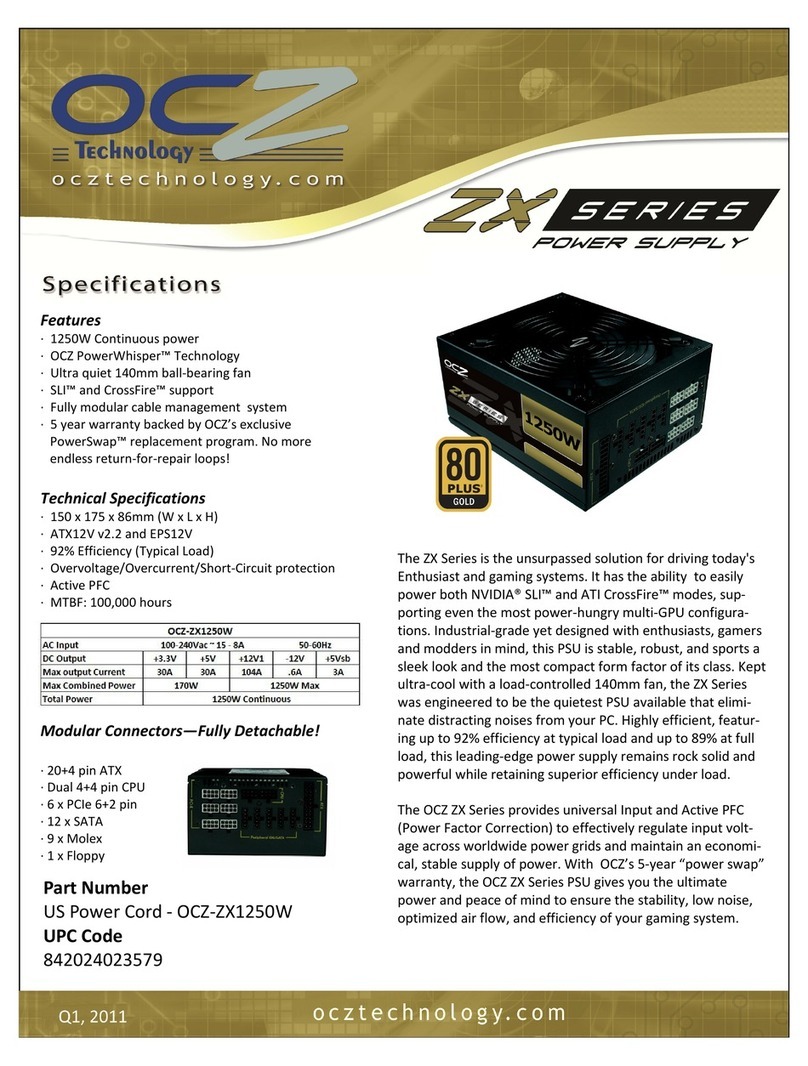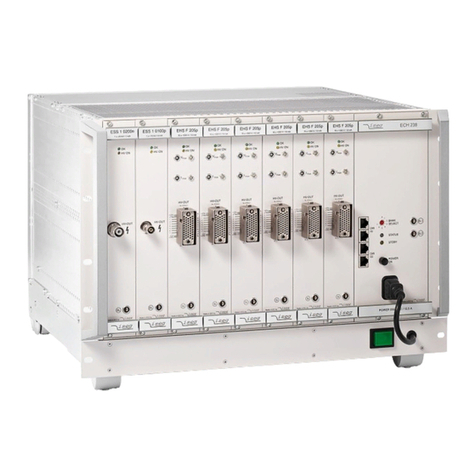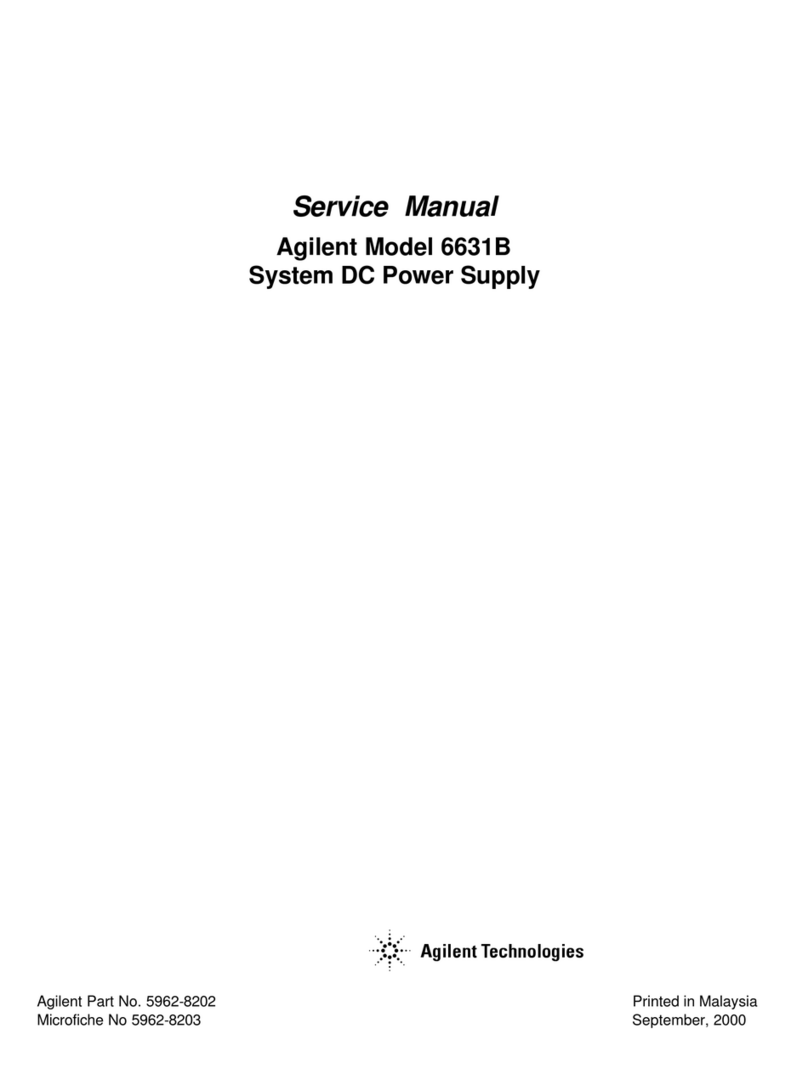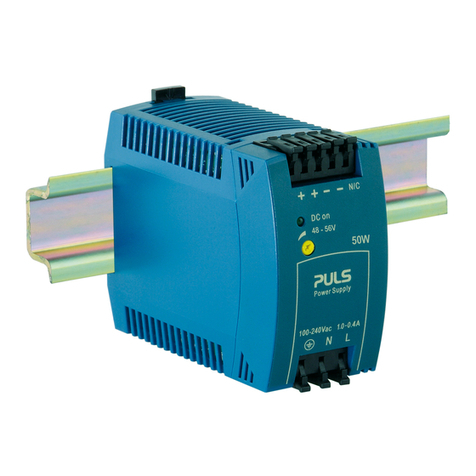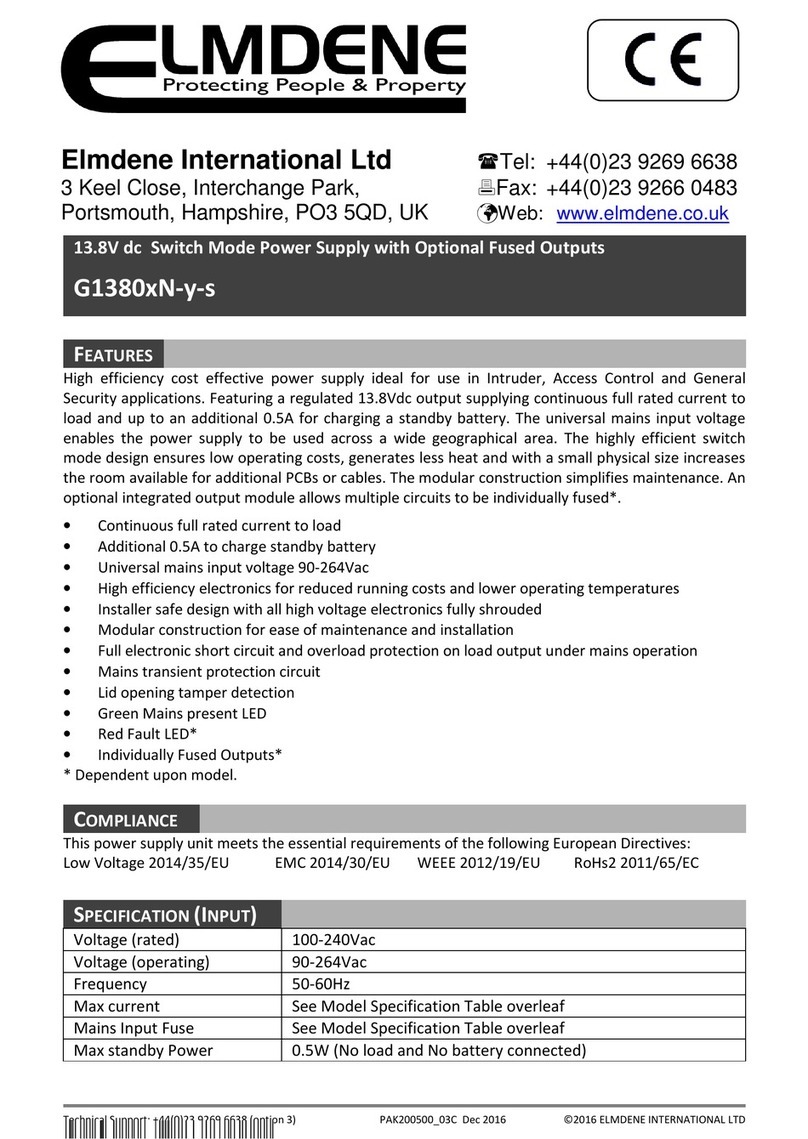3
FrançaisItaliano
Alimentation à découpage
Cette notice s’adresse aux utilisateurs sans connaissances
techniques particulières. Veuillez lire la présente notice
avant le fonctionnement et conservez-la pour pouvoir vous
y reporter ultérieurement.
1 Possibilités d’utilisation
Cette alimentation à découpage avec tension de sortie
commutable sert à l’alimentation courant continu d’ap-
pareils électriques basse tension (par exemple lecteur CD
portable, ordinateur portable). Elle est protégée contre les
courts-circuits, surcharges et surchauffes. Caractéristique
particulière: la très faible consommation (< 0,5 W) de l’ali-
mentation lorsque l’appareil relié est éteint.
2 Conseils d’utilisation et de sécurité
Cet appareil répond à toutes les directives nécessaires de
l’Union Européenne et porte donc le symbole .
AVERTISSEMENT L’appareil est alimenté par une tension
dangereuse. Ne touchez jamais l‘inté-
rieur de l‘appareil car, en cas de mau-
vaise manipulation, vous pouvez subir
une décharge électrique.
•
L’appareil n’est conçu que pour une utilisation en inté-
rieur. Protégez-le de tout type de projections d’eau, des
éclaboussures, d’une humidité élevée et de la chaleur
(température ambiante admissible : 0–40 °C).
•
En aucun cas, vous ne devez poser d’objet contenant du
liquide ou un verre sur l’appareil.
•
Débranchez l’appareil immédiatement du secteur lorsque:
1. des dommages visibles apparaissent sur l’appareil ou
sur le cordon secteur,
2. après une chute ou un cas similaire, vous avez un
doute sur l’état de l’appareil,
3. des dysfonctionnements apparaissent.
Faites toujours appel à un technicien spécialisé pour ef-
fectuer les réparations.
•
Tout cordon secteur endommagé ne doit être remplacé
que par un technicien spécialisé.
•
Ne débranchez jamais l’appareil en tirant sur le cordon
secteur, tenez-le toujours par la prise.
•
Pour nettoyer l‘appareil, utilisez uniquement un chiffon
sec et doux, en aucun cas de produits chimiques ou d’eau.
•
Nous déclinons toute responsabilité en cas de dommages
corporels ou matériels résultants si l’appareil est utilisé
dans un but autre que celui pour lequel il a été conçu, s’il
n’est pas correctement branché, s’il y a surcharge ou s’il
n’est pas réparé par une personne habilitée, de même, la
garantie deviendrait caduque.
Lorsque l‘appareil est définitivement retiré du
service, vous devez le déposer dans une usine de
recyclage de proximité pour contribuer à son élimi-
nation non polluante.
CARTONS ET EMBALLAGE
PAPIER À TRIER
3 Fonctionnement
1) Réglez la tension de fonctionnement nécessaire pour
l’appareil à basse tension : avec la clé livrée, tournez le
sélecteur de tension jaune sur la valeur nécessaire.
La consommation de l’appareil basse tension ne doit
pas dépasser le courant de sortie de l’alimentation pour
la valeur de tension réglée (voir caractéristiques tech-
niques).
2) Déterminez, parmi les 7 adaptateurs livrés, celui qui
convient. Déterminez la position du pôle plus et du pôle
moins sur la prise d’alimentation de l’appareil basse ten-
sion (☞repère sur la prise) et placez l’adaptateur dans
la prise du cordon de l’alimentation en fonction :
Alimentatore switching
Queste istruzioni sono rivolte all‘utente senza conoscenze
tecniche specifiche. Vi preghiamo di leggerle attentamente
prima della messa in funzione e di conservarle per un uso
futuro.
1 Possibilità d’impiego
Questo alimentatore switching con tensione d’uscita com-
mutabile serve per alimentare apparecchi elettrici a ten-
sione bassa (p.es. lettori CD portatili, notebook) con cor-
rente continua. L’alimentatore è resistente ai cortocircuiti e
protetto contro sovraccarico e surriscaldamento. Una carat-
teristica particolare è il consumo di corrente molto ridotto
(<0,5 W) dell’alimentatore quando l’apparecchio collegato
è spento.
2 Avvertenze di sicurezza
Quest’apparecchio è conforme a tutte le direttive rilevanti
dell’UE e pertanto porta la sigla .
AVVERTIMENTO L’apparecchio è alimentato con perico-
losa tensione di rete. Non intervenire
mai personalmente al suo interno. La
manipolazione scorretta può provo-
care delle scariche elettriche perico-
lose.
•
Far funzionare l’apparecchio solo all’interno di locali. Pro-
teggerlo dall’acqua gocciolante e dagli spruzzi d’acqua,
da alta umidità dell’aria e dal calore (temperatura d’im-
piego ammessa fra 0 e 40 °C).
•
Non depositare sull’apparecchio dei contenitori riempiti
di liquidi, p. es. bicchieri.
•
Staccare subito la spina rete se:
1. l’apparecchio o il cavo rete presenta dei danni visibili;
2. dopo una caduta o dopo eventi simili sussiste il so-
spetto di un difetto;
3. l’apparecchio non funziona correttamente.
Per la riparazione rivolgersi sempre ad un’officina com-
petente.
•
Il cavo rete, se danneggiato, deve essere sostituito solo
da un laboratorio autorizzato.
•
Staccare il cavo rete afferrando la spina, senza tirare il
cavo.
•
Per la pulizia usare solo un panno morbido, asciutto; non
impiegare in nessun caso prodotti chimici o acqua.
•
Nel caso d’uso improprio, di collegamenti sbagliati, di
sovraccarico o di riparazione non a regola d’arte dell’a-
limentatore, non si assume nessuna responsabilità per
eventuali danni consequenziali a persone o a cose e non
si assume nessuna garanzia per lo strumento.
Se si desidera eliminare l‘apparecchio defini-
tivamente, consegnarlo per lo smaltimento a
un‘istituzione locale per il riciclaggio.
3 Messa in funzione
1) Impostare la tensione d’esercizio richiesta per l’apparec-
chio a tensione bassa: posizionare il selettore giallo della
tensione sul valore necessario servendosi della chiave in
dotazione.
La corrente assorbita dell’apparecchio a tensione
bassa non deve superare la corrente d’uscita dell’alimen-
tatore relativa alla tensione impostata (vedi Dati tecnici).
2) Fra i 7 adattatori in dotazione scegliere quello adatto.
Individuare la posizione del polo positivo e del polo ne-
gativo sulla presa d’alimentazione dell’apparecchio a
tensione bassa (☞contrassegno sulla presa) e inserire
di conseguenza l’adattatore nella presa del cavo dell’a-
limentatore:
Con un contrassegno di questo tipo o simile
della presa d’alimentazione, il polo positivo
deve trovarsi rispettivamente sulla punta e sul
contatto interno dell’adattatore: inserire l’adat-
tatore nella presa in modo che la freccia della
presa indichi la cifra o le cifre dell’adattatore
(fig. 1).
Con questo contrassegno, il polo negativo
deve trovarsi rispettivamente sulla punta e sul
contatto interno dell’adattatore: inserire l’adat-
tatore nella presa in modo che la freccia della
presa indichi il codice dell’adattatore (fig. 2).
3) Collegare l’alimentatore con la presa di alimentazione
dell’apparecchio a tensione bassa servendosi del adat-
tatore.
4) Alla fine inserire la spina rete dell’alimentatore in una
presa di rete (100–240V, 50– 60Hz). Si accende la spia
rossa di funzionamento.
Anche se l’apparecchio collegato è spento, l’alimentatore
consuma un po’ di corrente. Perciò conviene staccarlo dalla
presa di rete se non serve per un periodo prolungato.
4 Dati tecnici
Alimentazione:. . . . . . . 100 –240 V, 50 – 60Hz, 1320 mA
Potenza assorbita
a vuoto: . . . . . . . . . . . . < 0,5 W
Tensione d’uscita:. . . . . ⎓ 6 /7,5/ 9/12/ 13,5/15 V
Corrente d‘uscita:. . . . . 5 A con ⎓ 6 /7,5/9 /12 V
3,8 A con ⎓ 13,5 /15 V
Dimensioni, peso: . . . . . 70 × 37 × 140mm, 480g
Adattatori
2 jack: . . . . . . . . . . . .
⌀
2,5mm(A) e 3,5 mm(B)
5 spinotti: . . . . . . . . .
⌀
esterno/interno in mm
2,35/0,75 (S), 3,5/1,35 (H),
5,0/2,1(D), 5,5/2,1(E), 5,5/2,5 (G)
Con riserva di modifiche tecniche.
Avec ce repère ou un semblable de la prise
d’alimentation, le pôle plus doit être à la pointe
ou au contact intérieur de l’adaptateur : reliez
l’adaptateur à la prise de telle sorte que la
flèche de la prise pointe vers le(s) chiffre(s) de
l’adaptateur (schéma1).
Avec ce repère, le pôle moins doit être à la
pointe ou au contact intérieur de l’adaptateur:
reliez l’adaptateur à la prise de telle sorte que
la flèche de la prise pointe vers la lettre repère
de l’adaptateur (schéma 2).
3) Reliez l’alimentation via l’adaptateur à la prise d’alimen-
tation sur l’appareil basse tension.
4) Enfin reliez l’alimentation à une prise secteur (100– 240V,
50– 60 Hz). La LED rouge, témoin de fonctionnement
brille.
Même lorsque l’appareil relié est éteint, l’alimentation a
une faible consommation. Il est recommandé de la débran-
cher du secteur si elle ne doit pas être utilisée pendant une
longue période.
4 Caractéristiques techniques
Alimentation : . . . . . . . 100 –240 V, 50 – 60Hz, 1320mA
Consommation en
fonctionnement à vide:. < 0,5 W
Tension de sortie : . . . . ⎓ 6 /7,5/ 9/12 /13,5/15 V
Courant de sortie : . . . . 5 A pour ⎓ 6 /7,5 /9 /12 V
3,8 A pour ⎓ 13,5 /15 V
Dimensions, poids :. . . . 70 × 37 × 140 mm, 480g
Adaptateurs
2 fiches jack : . . . . . .
⌀
2,5mm(A) et 3,5 mm(B)
5 fiches alimentation :
⌀
ext./int. en mm :
2,35/0,75 (S), 3,5/1,35 (H),
5,0/2,1(D), 5,5/2,1(E), 5,5/2,5 (G)
Tout droit de modification réservé.
➀Pôle plus à la pointe/au contact intérieur
Polo positivo alla punta/al contatto interno
➁Pôle moins à la pointe/au contact intérieur
Polo negativo alla punta/al contatto interno
1 2
